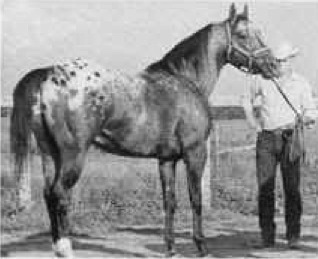There seems to be a prevailing thought that how much you love your horse, or he loves you, determines how your equipment works. It doesn’t. Nothing determines how your equipment works except how it is meant to function. If it’s a snaffle it functions like a snaffle. If it’s a tiedown it functions like a tiedown. Nothing about you or your horse alters that UNLESS you actually alter the piece of equipment by adding or subtracting something to it.
Riders/trainers should also understand that nothing about the horse (barring an actual physical deformity) changes how the equipment works. Different horses may REACT differently, just like some people can pick up spiders and some people run screaming from the room, but the equipment, like the spider, is a constant. Reaction is NOT mechanical. Reaction is not based on a specific forumula. Reaction is based on pain, fear, emotion. So don’t confuse reaction with the mechanics of the bit. Some horses ignore pain, some are hypersensitive. Some tolerate poll pressure, some hate it. Just because your horse doesn’t react adversely does not mean he’s not in pain or anxious. Looking at the mechanics of the bit, plus the horse’s anatomy, can give you clues that his response may be hiding. Because at some point common sense has to kick in and say that X pounds of pressure on anything’s tongue is painful. I’ve bitten my tongue before, and it wasn’t with anywhere near the pressure that most people put on the reins and it hurt like hell. So imagine how the horse feels. And while it is true that a finished horse will react differently to a bit than a green horse it still does not change the way the bit works. A finished horse has a conditioned response to the bit's actions. A green horse is listening to his nerve endings telling him what to do UNTIL he finally connects that the rider is trying to tell him something and if he does it there is a reward of some kind. However, neither reaction changes the mechanics of the bit.
So when you assess your horse, and the bits you use, repeat these things to yourself, because honesty is the best policy when dealing with horses. And stop confusing emotional reaction with bitting mechanics.
Things that DO NOT alter how the bit works:
How much you love your horse
How much your horse loves you
Your relationship is not special, unique or rare. It’s simply a relationship with an animal you like, that likes you back and hopefully will last a long pain free time.
Horse’s breed
Horse’s age
Horse’s color
Horse’s training level
Weather
Political party
Gender
Sexual preferences
Favorite TV show
Favorite horse event
How much you pay for the bit
How much you win while using it
Celebrity using it
Advertising used to promote the bit
Where you live
How old you are
Whether all your tack matches
How much you love your horse
How much your horse loves you
Your relationship is not special, unique or rare. It’s simply a relationship with an animal you like, that likes you back and hopefully will last a long pain free time.
Horse’s breed
Horse’s age
Horse’s color
Horse’s training level
Weather
Political party
Gender
Sexual preferences
Favorite TV show
Favorite horse event
How much you pay for the bit
How much you win while using it
Celebrity using it
Advertising used to promote the bit
Where you live
How old you are
Whether all your tack matches
Drugs, they alter reaction, not mechanics
Things that will alter how a bit works;
A welder
A hack saw
Blow torch
Draw reins
Martingale
Gag pulley
The bit breaking
Adding a curbstrap or taking one off
A welder
A hack saw
Blow torch
Draw reins
Martingale
Gag pulley
The bit breaking
Adding a curbstrap or taking one off
Tracy Meisenbach
Copyright 3-2016
Do not copy, republish or use without permission.
Copyright 3-2016
Do not copy, republish or use without permission.



